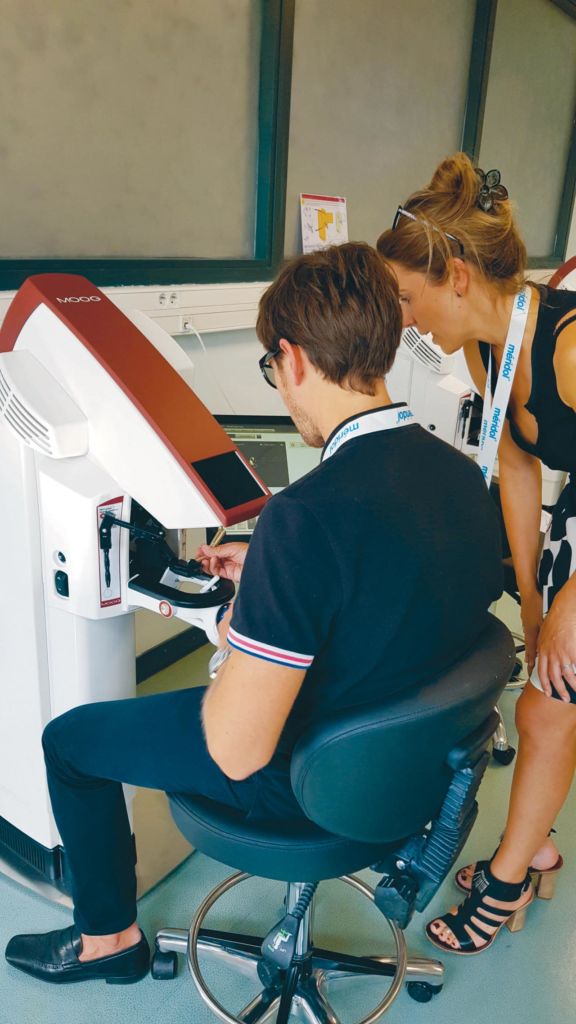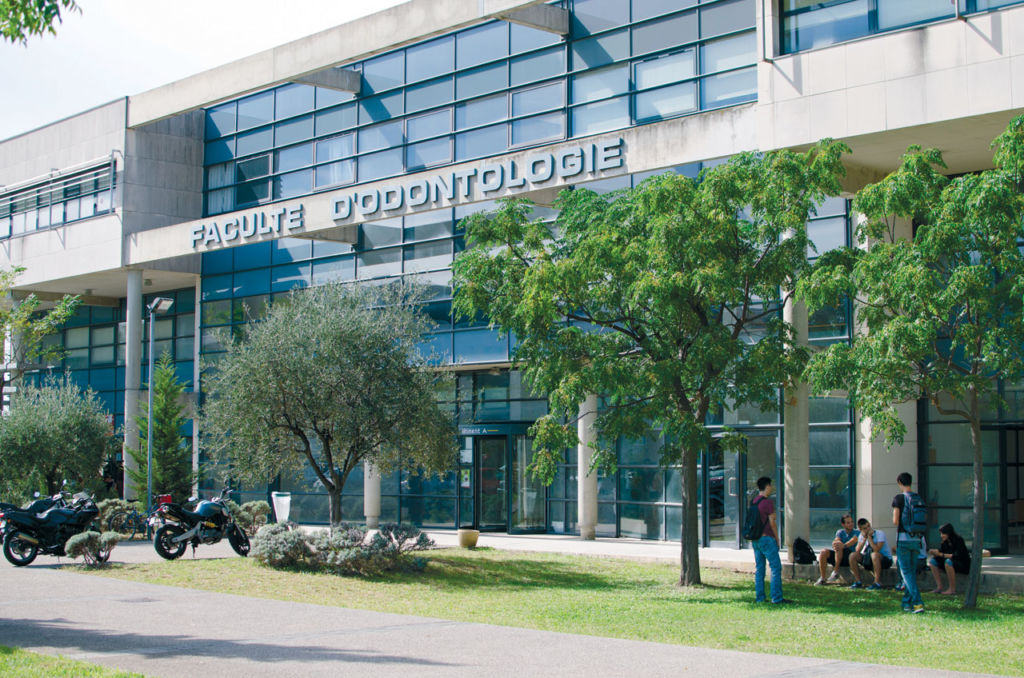The Faculty of Dentistry is going digital!
The Faculty of Dentistry is experimenting with practical training for its students using virtual simulators. This innovative approach is virtually unique in France.
In September 2018, virtual reality made its debut at the Faculty of Dentistry. Five haptic simulators[1] —among the very first in France—were inaugurated as part of the renovation of two practical work rooms. This was a historic first step toward the dematerialization of dental student training. "Working on simulators allows students to refine their technical skills. It also allows them to acquire the same skills as working on resin teeth, but in a more environmentally friendly and economical way, " explained Jean Valcarcel, dean of the faculty, recently.
Customizable training
 Responsible for training students in the use of these new machines, Ivan Panayotov and Bruno Picart now offer students the opportunity to practice, assess their skills, and progress at their own pace on these simulators. During one-hour open sessions, each student is assigned a machine on which they can perform a series of manual dexterity exercises.
Responsible for training students in the use of these new machines, Ivan Panayotov and Bruno Picart now offer students the opportunity to practice, assess their skills, and progress at their own pace on these simulators. During one-hour open sessions, each student is assigned a machine on which they can perform a series of manual dexterity exercises.
"The student chooses the type of exercise and the instruments they need. They then proceed to excavate the decayed tissue, during which time the virtual reality simulator allows them to view all their movements on a screen and, above all, to physically feel the difference in the resistance of the dental tissue (decay, enamel, dentin) to drilling! The simulator exercises thus allow students to work in conditions close to those encountered when working on real patients and to improve their manual dexterity in direct vision and, above all, in indirect vision (using a mirror)," explain Ivan Panayotov and his colleagues Bruno Picart, Sofia Dubois, and Marie Ceccotti, who observe and evaluate the work performed simultaneously by the students at the machines during each session (precision, speed of movements, quality of therapeutic treatments performed). A score is given at the end of each session, allowing the progress of each student to be monitored from week to week.
"The working conditions on a haptic simulator are ultimately quite close to reality, but not identical. For example, neither the patient's saliva nor their breathing movements are reproduced by the machines. Similarly, the view on the 3D screen is not partially obstructed by the cheeks or tongue, as is the case in reality," says a former user who, like all those who have tried them, sees these new machines as a tremendous training aid, particularly for students in preclinical training (the learning and advanced training phase in dentistry).
The subject of an internal satisfaction survey last spring, the new virtual reality simulators acquired by the faculty are now widely accepted by both students and teaching staff. Very recently, their use was naturally integrated into the assessment curriculum for second- and third-year students. At the Faculty of Dentistry, the shift to digital learning for students is now well and truly underway.
[1]Relating to the sense of touch
The School of Dentistry as seen by a student
Marie Teyssier, 24, sixth-year dentistry student
"With good grades after completing the PACES program, I decided to pursue dentistry after completing an internship at a private practice. I was one of the first students to test the faculty's new simulators. This allowed me to assess and improve my manual dexterity during five training sessions, particularly in indirect vision milling, a technique that students find particularly daunting!"
Key figures
- 67 Professors
- 141 undergraduate students;
- 145 master's students;
- 125 students in a two-year short postgraduate program;
- 241 students in long postgraduate programs lasting three or four years.
Digital technology at the service of clinical dentistry
In 2007, CAD/CAM[1] was introduced at the dental care center, under the responsibility of Philipe Gibert, to offer patients optical impressions for the design, on-site computer-assisted manufacturing, and fitting of ceramic dental prostheses in a single appointment. The integration of digital technology into dental care protocols gradually expanded, culminating in 2015 with the creation of the first CAD/CAM dental application unit in France. "Jean Valcarcel, dean of the faculty, and Sylvie Montal, head of department, aim to generalize the use of digital technology across all departments of the healthcare center and, of course, to teach the theoretical mastery of these new techniques, which are undoubtedly the fastest, most accurate, and most effective techniques known today," explains Michel Fages, head of the "CAD/CAM Prosthetics" medical unit at the university hospital.
[1] Computer-aided design and manufacturing
